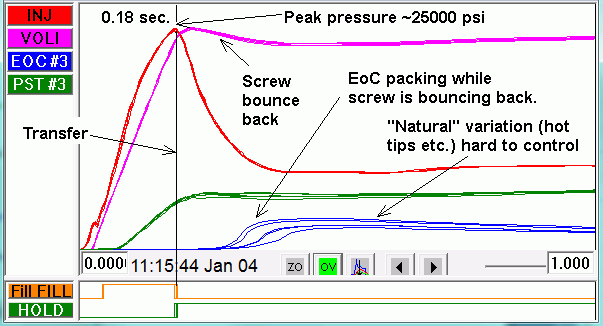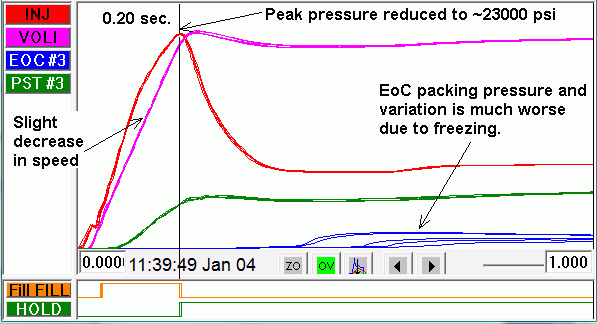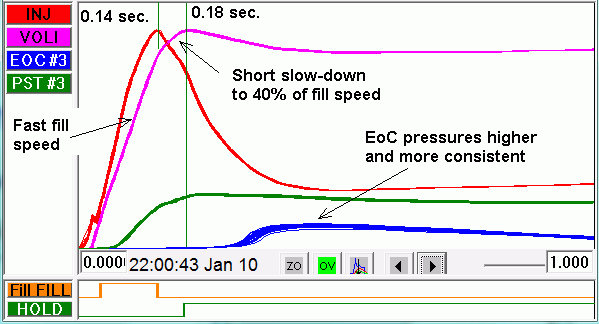Tip of the Day 182: Stored Energy in Thin-Wall Filling
When pressing wine grapes with a bladder press, why do we pressurize it with water instead of air? If you were standing near the press when it burst, which would you rather have in it? 120 gallons of compressed air or water? I would go for the water. Why? Stored energy. With the air at say 100 psi you a standing beside a bomb.
Think of what we do in a mold manifold and injection barrel during fill when we compress plastic to say 25,000 psi (1724 bar). Like air, plastics are compressible, though not as much. Of course the pressures are much, much higher. Once it is compressed, that energy must go somewhere after transfer: either into the part or back into the barrel.
This problem becomes ever more significant as we move the left side of the molding quadrant . Parts with very thin walls have very little volume. The runner system (usually hot runner) that delivers the material has both area (manifold branches) and depth (drops). This can add up to quite a lot of volume relative to the parts. Commonly we see manifold volumes 3 to 5 times the total shot volume (all parts), sometimes even more (12?). Think of it as molding parts with a cushion at 500% of shot size.
So why not just slow down to reduce stored energy? As discussed in the previous tip, we have no choice about fill time. The “time barrier” forces us to get the parts filled before they freeze.
Let’s walk through an example. Here are some data from a 6-cavity, thin-wall packaging mold. We find that the end of cavity cannot be packed much after about 0.5 seconds. So we end up with a 0.2 second machine fill time and 25,000 psi injection pressure to do it.

How can we lower this stored energy? If we transfer earlier or decrease filling speed, then the peak injection pressure will be lower. But then more of the part would be filled in the decompressing phase, “coasting” toward a full part. This would cause even more freezing and less ability to pack. And more variation as shown here.

Here is one method that worked in this case. Instead of transferring earlier or filling slower we added a second speed to slightly slow the screw just before transfer. This is a little like decoupled 3, though in this case transfer occurs before the cavity is full. Also, the machine did not have external transfer so we used position for transfer.

So the best we can do in very thin-wall molding is to try to control the crash.
In the next tip we will cover some adjustments in our thinking that can help interpret these graphs.